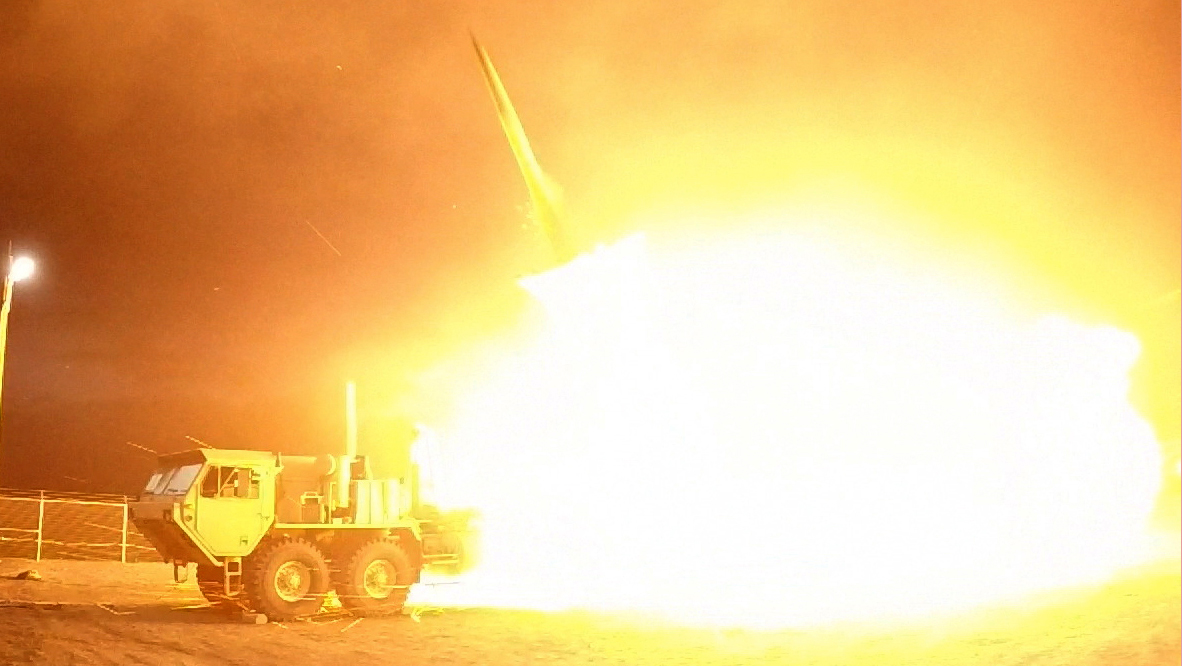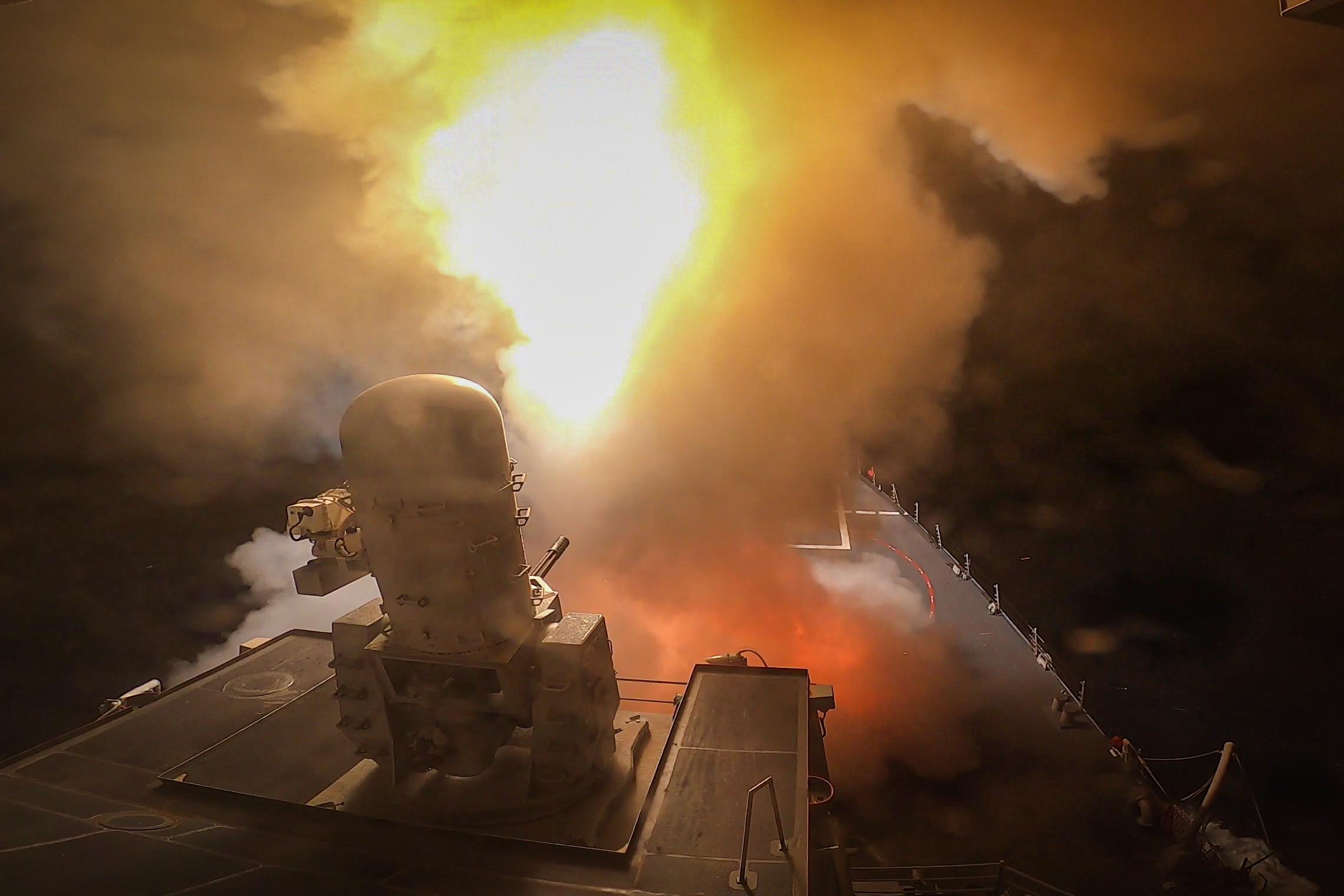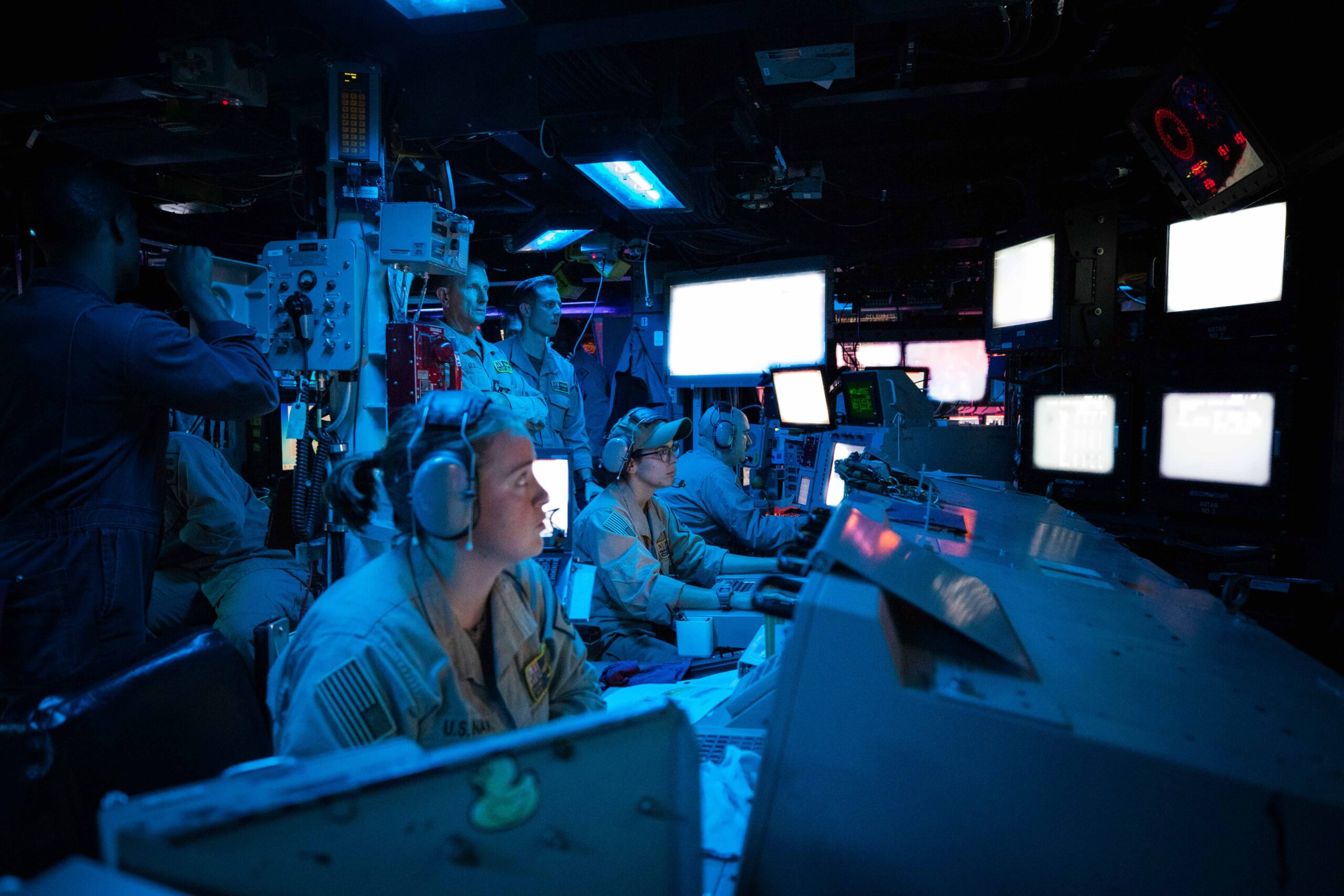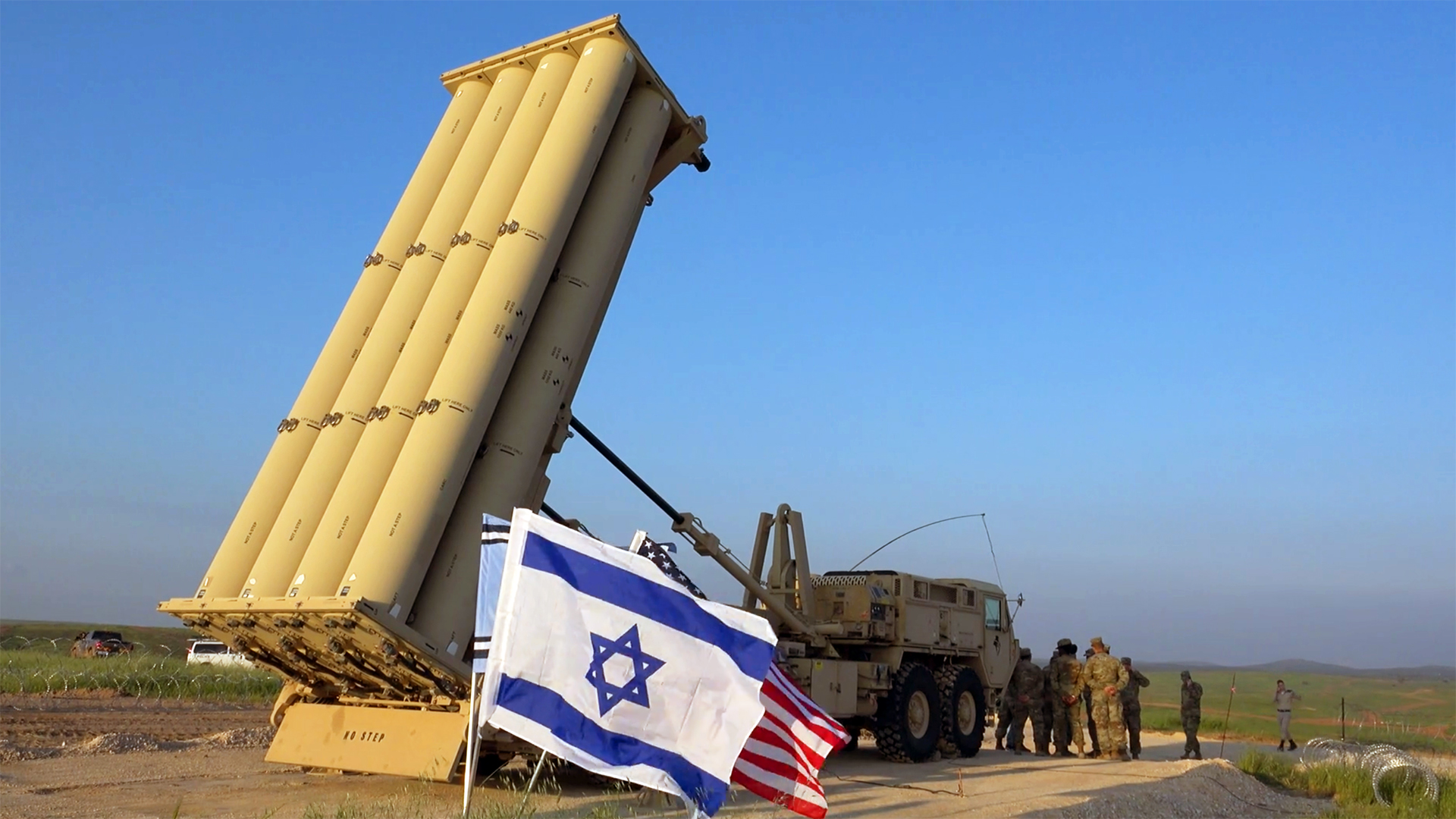The pressure throughout the Middle East is continuing to build as Israel says it is poised and ready to execute its postponed ground assault into the Gaza Strip. With Hezbollah and Israel trading fire across the Lebanon border at a growing pace and after USS Carney swatted down a relatively large-scale missile and drone attack emanating from Iranian proxies in Yemen, as well as numerous drone and rocket attacks on bases with U.S. personnel in Iraq and Syria, the possibility that the Gaza operation could trigger a much wider conflict is highly palpable. As a result, the U.S. is deploying additional Patriot batteries and a Terminal High-Altitude Area Defense (THAAD) ballistic missile defense battery to the region.
The decision to send these assets, especially the THAAD battery, is certainly an ominous sign, but it remains part of a larger contingency operation now underway to place much more firepower in the region should Iran’s proxies, or even Iran itself, enter the conflict. This will soon include two carrier strike groups and a amphibious strike group, as well as additional allied warships congregating in the Eastern Mediterranean.

A Statement from Secretary of Defense Lloyd Austin summed up the latest American force posture alterations in the region:
“Following detailed discussions with President Biden on recent escalations by Iran and its proxy forces across the Middle East Region, today I directed a series of additional steps to further strengthen the Department of Defense posture in the region. These steps will bolster regional deterrence efforts, increase force protection for U.S. forces in the region, and assist in the defense of Israel.
First, I redirected the movement of the USS Dwight D. Eisenhower Carrier Strike Group to the Central Command area of responsibility. This carrier strike group is in addition to the USS Gerald R. Ford Carrier Strike Group, which is currently operating in the Eastern Mediterranean Sea. It will further increase our force posture and strengthen our capabilities and ability to respond to a range of contingencies.
I have also activated the deployment of a Terminal High Altitude Area Defense (THAAD) battery as well as additional Patriot battalions to locations throughout the region to increase force protection for U.S. forces.
Finally, I have placed an additional number of forces on prepare to deploy orders as part of prudent contingency planning, to increase their readiness and ability to quickly respond as required.
I will continue to assess our force posture requirements in the region and consider deploying additional capabilities as necessary.“
THAAD is used to intercept ballistic missiles during the later stage of their attack profiles, as they transition out of the midcourse portion of their flight and descend down towards their targets. It can intercept more capable, faster and farther-flying ballistic missiles and at greater ranges than Patriot, and thus provides an upper-layer anti-ballistic missile defense tier that, in many cases, complements Patriot. UAE also operates THAAD. The first operational use of the system happened there in 2022. Saudi Arabia has the system on order, with the initial system arriving in 2026.

There is a general misconception about how much capacity the U.S. has when it comes to these advanced air defenses. Patriot batteries are limited in number — you can read all about this reality here — and THAAD is a very low-density, high-value asset. So moving these into the region means they cannot be available elsewhere for contingencies. That does invite some risk, but considering Iran is armed to the teeth with capable ballistic missiles, and even its proxies have them at their disposal, it is a decision that we were expecting.
Israel posses arguably the most advanced integrated air defense system (IADS) anywhere, with robust anti-ballistic missile capability via Arrow 2 and Arrow 3, Patriot/GEM-T, and David’s Sling. You can read a detailed breakdown of Israel IADS in our resent feature found here. It isn’t clear where THAAD will be headed as it could end up in another country to protect America’s regional interests and installations, but U.S. THAAD batteries have deployed to Israel before.

Speaking of air defense, images of USS Carney engaging Houthi drones and cruise missiles have been posted by the Navy. They show the destroyer’s fore and aft vertical launch system arrays in action and a shot inside the combat information center as the incident, which went on for many hours, unfolded.



New video of A-10s arriving in the region has also been released:
U.S. Secretary of State Antony Blinken has stated he is highly concerned about the likelihood that Iranian proxies will go after Americans and American forces on a larger scale in the region:
A travel advisory about Americans in Iraq was also released today, underscoring the likelihood that they would be targeted, including potential for kidnapping and aerial attacks. The advisory reads:
“U.S. citizens in Iraq face high risks to their safety and security, including the potential for violence and kidnapping. Terrorist and insurgent groups regularly attack Iraqi security forces and civilians. Anti-U.S. militias threaten U.S. citizens and international companies throughout Iraq. Attacks using improvised explosive devices, indirect fire, and unmanned aerial vehicles occur in many areas of the country, including Baghdad and other major cities. In an emergency, consular services to U.S. citizens in Iraq are limited due to severe restrictions on the movements of U.S. government personnel.
Demonstrations, protests, and strikes occur frequently throughout the country. These events can develop quickly without prior notice, often interrupting traffic, transportation, and other services, and sometimes turning violent.
Do not travel near Iraq’s northern borders due to the continued threat of attacks by terrorist groups, armed conflict, aerial bombardment, and civil unrest. U.S. citizens should especially avoid areas near armed groups in northern Iraq, which have been targeted with aerial strikes by neighboring countries’ militaries.
U.S. citizens should not travel through Iraq to engage in armed conflict in Syria, where they would face extreme personal risks (kidnapping, injury, or death) and legal risks (arrest, fines, and expulsion). The Kurdistan Regional Government in Iraq has stated that it will impose prison sentences of up to ten years on individuals who illegally cross the Iraq-Syria border. Additionally, fighting on behalf of or supporting designated terrorist organizations is a crime under U.S. law that can result in prison sentences and large fines in the United States.
Because of security concerns, U.S. government personnel in Baghdad are instructed not to use Baghdad International Airport. Due to risks to civil aviation operating in the Baghdad Flight Information Region, the Federal Aviation Administration (FAA) has extended for an additional two years its Special Federal Aviation Regulation (SFAR) prohibiting certain flights at altitudes below 32,000 feet. For more information, U.S. citizens should consult the Federal Aviation Administration’s Prohibitions, Restrictions, and Notices.“
Blinked also highlighted the need for a plan for what comes after Hamas in Gaza, assuming Israel ends their reign there, during his interview on Meet The Press:
“There are different ideas out there about what could follow, but all of that needs to be worked out and it’s something that needs to be worked out even as Israel is dealing with the current threat.”
Time of Israel reports that Prime Minister Benjamin Netanyahu warned Hezbollah of entering the war as clashes continue on the Lebanon border:
“If Hezbollah decides to enter the war, it will long for the Second Lebanon War… It will be making the mistake of its life. We will strike it with strength that it cannot even imagine and the significance to it and to the country of Lebanon will be devastating.”
Netanyahu also laid out the existential nature of this war as he sees it:
“I know that you lost friends, and it’s a very difficult thing, but we are in the fight of our life, a fight for our home. That’s not an exaggeration, it’s not an overstatement, that’s this war. It is kill or be killed, and they need to be killed.”
The IDF says it is stepping-up airstrikes in Gaza ahead of the ground operation.
IDF Chief of Staff Lt. Gen. Herzi Halevi said the following yesterday:
“We will enter the Gaza Strip. We will begin an operational and professional mission to destroy the Hamas operatives, the Hamas infrastructure, and we will also keep in our minds the images, scenes, and the fallen from Shabbat two weeks ago. Gaza is complex, Gaza is dense, the enemy is preparing a lot of things there, but we are preparing things for them as well.”
Defense Minister Yoav Gallant stated that the ground operation could take months during remarks from the Israeli Air Force’s command center in Tel Aviv.
“This needs to be the last [ground] maneuver in Gaza, for the simple reason that after it there will be no Hamas. It will take a month, two months, three, but in the end, there will be no Hamas… Before the enemy meets the armored and infantry forces, it will meet the bombs of the Air Force.”
Aid is now flowing across the Rafah crossing between Egypt and Gaza. Multiple trucks initially crossed the border today. This comes after days of being held back as the approval from the Israeli government was being sought. Protests on the Egyptian side of the crossing have been a microcosm of the frustration of many in the region and beyond. The main concern was that the aid would be confiscated by Hamas and used to support their operations. Those concerns still remain and today was seen as a trial run. Israel says no fuel will be allowed to pass into Gaza due to these concerns.
The international community, including the U.S., put pressure on Israel to allow the aid to move through. Gaza has been with dwindling water and power for two weeks now.
These deliveries will need to be constant going forward as the humanitarian crisis in Gaza has already ballooned.
As for the hostages that are still trapped in Gaza, that number is now pegged at 210. Two American hostages were released yesterday. There was claims by Hamas that they wanted to release two more, but Israel denied it, saying it is just propaganda and lies. Regardless, the risk to those hostages changes in unpredictable ways once a ground assault begins. At this time, there are reports that the U.S. is trying to further delay the Israelis from executing their ground operation so that more of the hostages can be released via negotiation. Right now there are said to be 10 Americans unaccounted for after Hamas’s attacks in Israel.
Finally, an Israeli tank accidentally fired on an Egyptian border post today resulting in minor injuries, an incident for which Israel has apologized.
We will continue to update this post as more info comes available.
Contact the author: Tyler@thedrive.com
